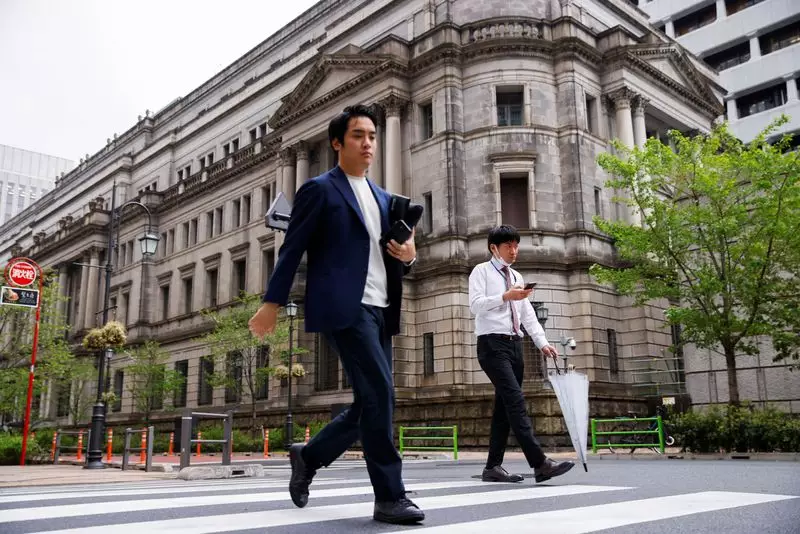In the dynamic realm of international finance, Japan finds itself grappling with a fragile economic situation exacerbated by a combination of aggressive monetary policies and currency fluctuations. The recent critique from Takeshi Shina, a prominent figure in the opposition and the shadow finance minister of Japan’s Constitutional Democratic Party (CDPJ), has brought renewed focus to the Bank of Japan’s (BOJ) monetary policy. As the yen’s value suffers under the weight of an expansive stimulus regime, Shina’s advocacy for a strategic interest rate increment has sparked discussions on the potential implications for Japan’s economic stability and living standards.
During a recent interview, Shina urged the BOJ to implement a series of incremental interest rate hikes, aiming to establish a target of at least 1%. He argues that the current short-term policy rate of 0.25% is insufficient for maintaining economic equilibrium and does not reflect the neutral level necessary for sustainable growth. This call for an uptick is grounded in a backdrop of escalating costs of living, which are attributed to the devaluation of the yen driven by the stark disparity between U.S. and Japanese interest rates.
Shina has articulated concerns that the BOJ’s prevailing policy is failing to fulfill its mandate of price stability, contributing to an erosion in household purchasing power as import prices rise. His assertion highlights a growing discomfort within Japanese society regarding inflationary pressures, especially among consumers who feel pinched by soaring living costs. Indeed, aside from a limited group of large manufacturers, the general populace appears discontented with the prevailing exchange rates.
The ongoing debate regarding monetary policy in Japan cannot be divorced from its political implications. Shina’s stance not only reflects a critical perspective on Hirogo Kuroda’s extraordinary monetary easing initiated in 2013 but also signifies a broader political battle over economic governance following the recent electoral landscape shift. The CDPJ’s voice has gained traction after a notable performance in the general elections, positioning itself as a formidable force in advocating for a more orthodox economic approach.
This political context complicates the BOJ’s decision-making process, as lawmakers increasingly scrutinize its strategies. Shina has persistently summoned BOJ officials, including the current governor, Kazuo Ueda, to respond to pressing concerns that challenge the sustainability of ultra-easy monetary policies. The dialogue surrounding this issue centers not only on the immediate effects of such policies but also on the long-term implications they pose for market integrity and the banking sector’s profitability.
An overarching theme in Shina’s critique is the lack of real wage growth, which he argues is being stunted by the weakened yen and the current monetary framework. With import costs on the rise due to currency depreciation, the purchasing power of Japanese citizens is compromised, leading to potential socioeconomic disparities. This emphasis on wage growth as a focal point of economic recovery underscores the need for collaboration between the BOJ and the government to devise a strategy that elevates income levels while fostering consumption and economic vitality.
The potential for gradual interest rate normalization presents a path to addressing these concerns, allowing for a recalibration of both fiscal and monetary policies. However, Shina’s proposition to shift from the BOJ’s current 2% inflation target to a more flexible goal reflects a nuanced understanding of the need for adaptability in policy-making, accommodating variances in economic indicators while still promoting stable growth.
As the BOJ prepares for its forthcoming rate review meetings in December and January, speculation about its next moves looms large. Recent polling reveals that while a slight majority of economists do not anticipate further rate increases in 2023, nearly 90% expect that rates may rise by the end of the fiscal year. The interplay between proactive monetary measures and external economic conditions—like U.S. inflation trends and the performance of the dollar—will ostensibly shape the BOJ’s actions moving forward.
Moreover, the dynamics of interest rate adjustments must be managed carefully to avoid unintended consequences that could further destabilize the economy. An overly aggressive approach might invite market turbulence, especially against a backdrop of global economic uncertainty. Thus, as Shina and other critics continue to press for reform, the BOJ must navigate a complex landscape that balances political pressures, public need, and macroeconomic principles.
The dialogue surrounding Japan’s monetary policy exemplifies the intricate relationship between economic theory and practical governance. With tensions around the yen’s value and domestic economic stability at the forefront, the call for interest rate hikes is emblematic of a broader yearning for sustainable growth. Shina’s perspective ties closely with the aspirations of many Japanese citizens seeking a resilient economy, underscoring the importance of coherent monetary policies that not only target inflation but also foster long-term prosperity and equitable growth.


Leave a Reply